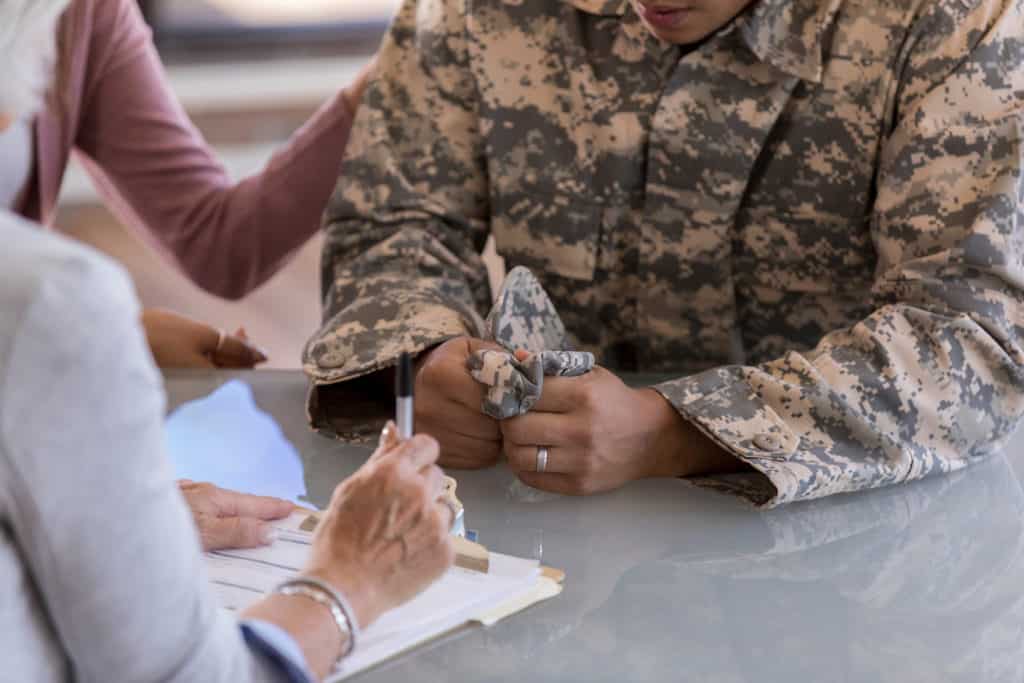We often hear about the connection between post traumatic stress disorder (PTSD) and substance use disorder. But what is it and how are they connected?
Just like substance use disorder (SUD), PTSD does not discriminate: anyone can have a stress reaction after a traumatic situation. It can be the loss of a loved one, a car accident, witnessing violence or anything that triggers your mind or body to protect itself from real or perceived danger. That fear triggers a “fight or flight” response in us — a split second decision to protect ourselves from harm or avoid it.
Most people can experience a wide range of reactions or emotions at first but eventually improve. But for others, those reactions or emotions do not go away after time.
For service members and veterans, those traumatic situations can also come from exposure to combat, physical assault, severe injuries, terrorist incidents, or military sexual trauma.

A professional can diagnose post traumatic stress disorder (PTSD) when symptoms last for more than a month and may also interfere with work and personal relationships. There are four main types of PTSD symptoms:
- Reliving the event (flashbacks, nightmares)
- Avoiding reminders of the event (thoughts, feelings, or places)
- Negative changes in beliefs and feelings (guilt, blame)
- Feeling keyed up (easily startled, anger, sleeplessness)
Substance use comes into play when a person suffering from PTSD tries to self-medicate with alcohol, prescription drugs or illicit drugs to dull their emotional pain and trauma. While the prevalence of both PTSD and SUD has been found to be higher in combat veterans, anyone experiencing PTSD is at risk for substance use disorder.
Are you concerned about someone with PTSD and SUD who needs help? The VA offers a free, online resource to help you find the most effective treatment. Designed originally for veterans, it’s a useful tool for anyone.
It’s designed to help you see how different PTSD treatments measure up against one another. It also helps you think about which PTSD treatment might be best for you and gives you tips on how to work with your provider to decide on a treatment.
SAFE Project’s Treatment Locator also provides location-based treatment center results based on your unique needs.

